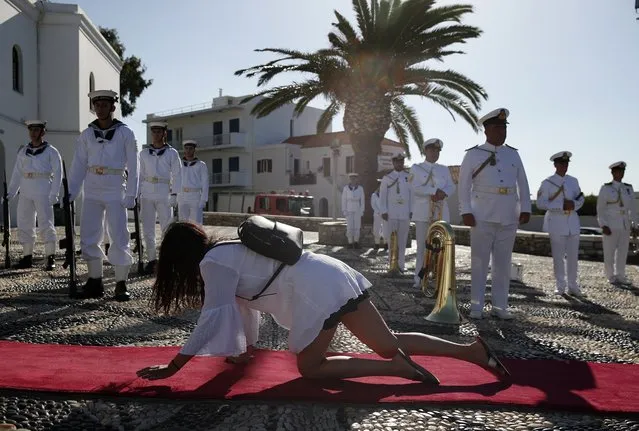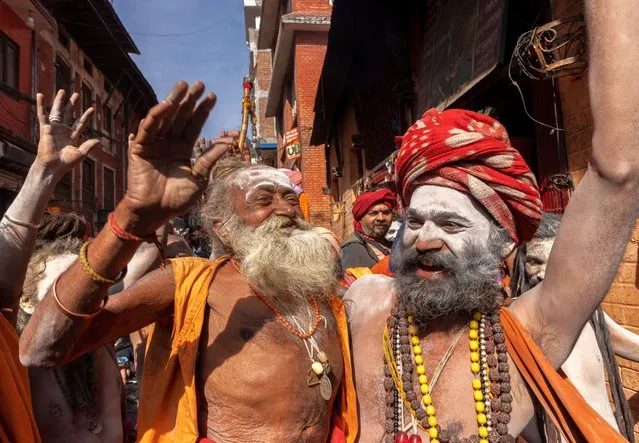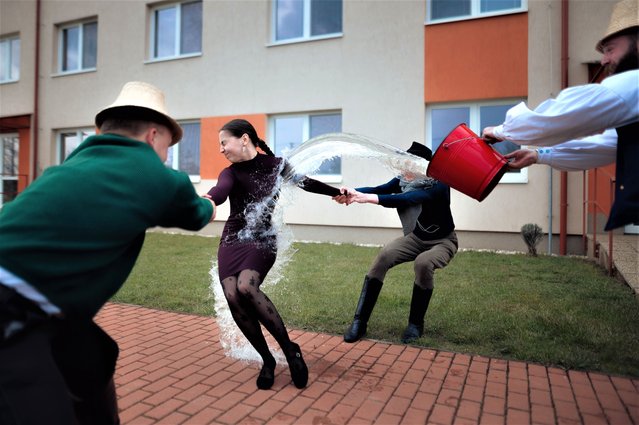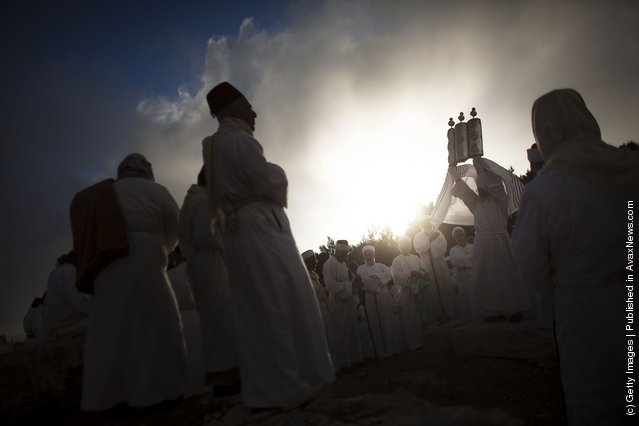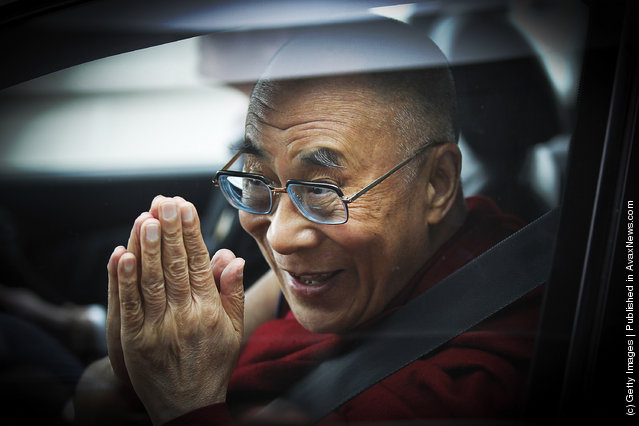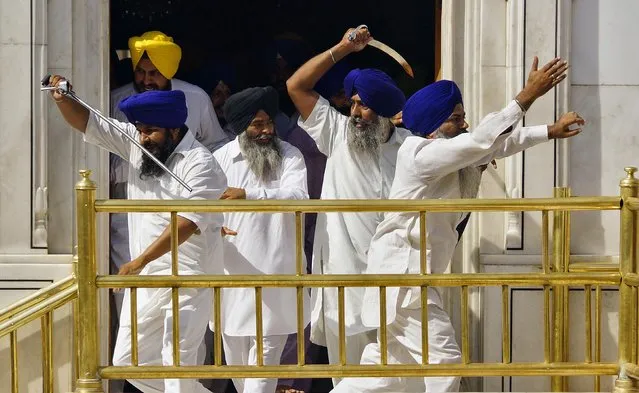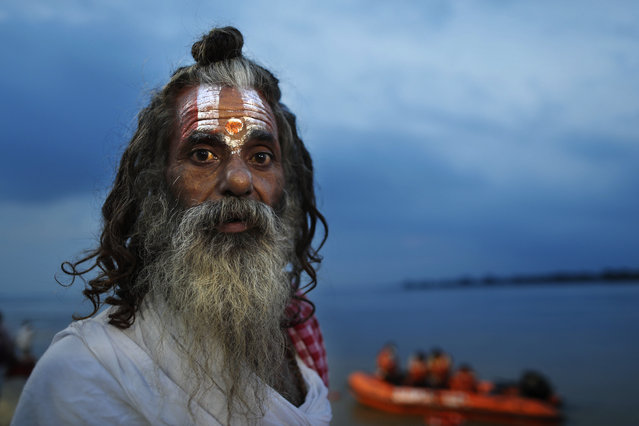
A Hindu holy man looks at a decoration on the ghats of the river Saryu as part of preparations for the groundbreaking ceremony of a temple to the Hindu god Ram in Ayodhya, in the Indian state of Uttar Pradesh, Monday, August 3, 2020. As Hindus prepare to celebrate the groundbreaking of a long-awaited temple at a disputed ground in northern India, Muslims say they have no firm plans yet to build a new mosque at an alternative site they were granted to replace the one torn down by Hindu hard-liners decades ago. (Photo by Rajesh Kumar Singh/AP Photo)
13 Aug 2020 00:01:00,post received
0 comments

